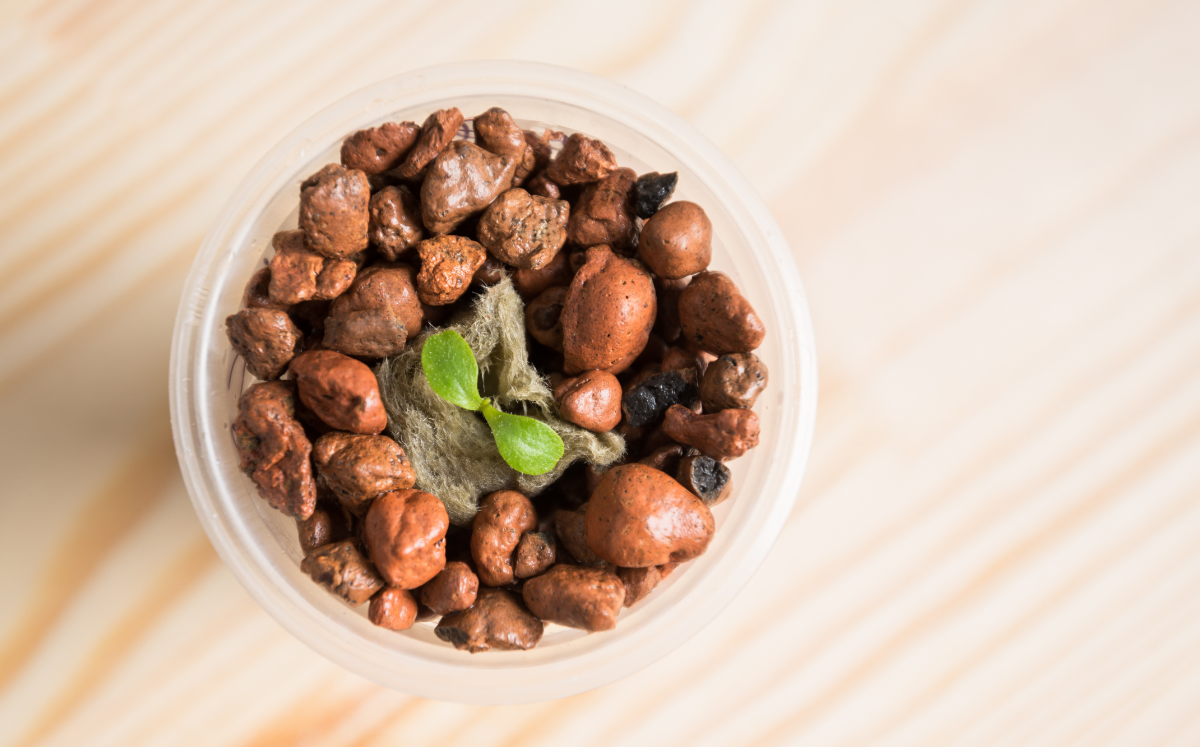Plants need a support to grow, this can be an organic soil or a mineral substrate. Some plants are easier to cultivate in such substrates because they are native to areas that do not have a high humus content in the soil. Non-living material prevents uncontrollable processes in the soil and you can care for houseplants better. We will introduce you to various components and their properties so that you can mix an ideal houseplant substrate!
Difference mineral and organic
Organic components are alive and create an optimal environment for effective microorganisms. People are increasingly talking about earth or soil and not about substrates.
Good mineral Substrates for most houseplants
You can use the different elements individually as a growing medium for plants or mix them together to provide the plant with the ideal soil mixture. Organic material can also be added as desired.
expanded clay
The starting material is clay, which contains organic components. However, these burn at high temperatures and expand the clay to almost five times its size. Clay balls are created with many pores inside. It does not mold and is permanently structurally stable. This makes it ideal for use in pots, where it is primarily used for drainage. However, expanded clay is not able to store large amounts of water. The pH value is 6.2 to 7.5.

Pearlite
The white volcanic rock is heated and as a result it develops a structure like popcorn. This mineral is dusty, can break down under pressure and degrades after about 5 years. It has many advantages: It gives potting soil a loose texture and allows plant roots to grow healthily through sufficient oxygen. It is also sterile and pH neutral. Perlite is rather inexpensive and available in different grain sizes.
Pumice
This mineral is a light and porous aluminum silicate that is ejected during volcanic eruptions. German pumice is sterile and pH neutral, but from other countries it can have a pH of up to 8.5. You can use pumice stone to loosen your soil. This gives the roots access to air and water, which helps absorb nutrients and improves the health and development of the plant. Similar to expanded clay, it is also suitable for hydroponics.

lava
Cooled lava can be crushed and then used as an inorganic material for soil substrates or as a permanent mulch layer. Lava rock is very porous, breathable and water-permeable. It can ensure constant moisture and temperature in the soil. The pH value depends on the type of lava, but is usually between 6.0 and 7.0.
Zeolite
Zeolite is a group of aluminosilicates - they are of volcanic origin. The so-called clinoptilolite is suitable for houseplants and in the garden. The use of zeolite can lead to savings in fertilizer and water and optimize the nutrient potential in the soil. For popular tropical houseplants such as Philodendron or Anthurium, a proportion of 40% zeolite in the soil substrate is ideal. Zeolite is available in a variety of grain sizes - from zeolite powder to sand. Zeolite grains of up to 8 mm can be used for palm trees and cacti. It should be noted that when using zeolite, the pH may increase over time.
What is hydroponics?
In hydroponics, the plants are not grown in potting soil, but in water. Soil is not essential for plants to grow as its primary purpose is to provide a base for the roots to hold on to. However, it can also
For this you need a planter and an inner pot, fill in your minerals and pot your plant. It is important to wash out the roots beforehand and finally put a water level indicator in the pot. There must always be a certain amount of water in the plant pot so that the plant can survive.
Since non-organic substrates, unlike soil, do not provide nutrients, you have to fertilize with important nutrients such as nitrogen, phosphorus and potassium every time you water. All FARBIO® fertilizers can be used for hydroponics and will not burn the roots! The FARBIO® NPK organic liquid fertilizer for green plants is very suitable for supplying your plants with the important main nutrients.
Advantages: Without peat and compost
If you use a growing substrate free of organic elements such as humus, white peat or wood fibers, this reduces the likelihood of disease and pest attacks on your plant, for example root rot caused by waterlogging.

























